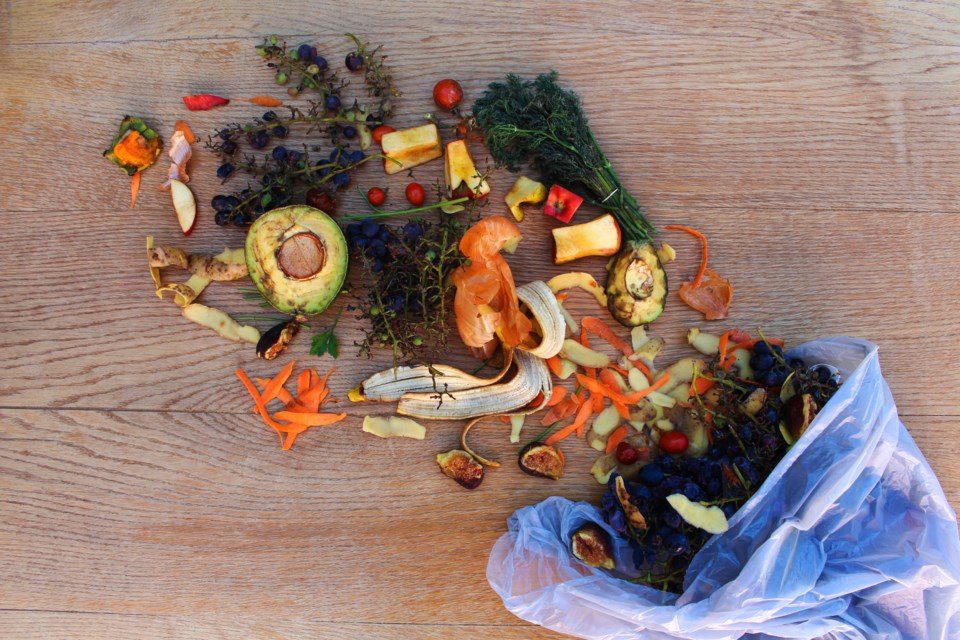A new report highlights the immense amount of food waste in the Sea to Sky, while aiming to make it easier for communities to feed those who need it most.
At its Oct. 5 meeting, Whistler’s mayor and council heard a presentation on the Sea to Sky Food Recovery Strategy Action Plan, a collaboration between a wide range of organizations in the corridor and funded by a grant from the Union of BC Municipalities.
The Resort Municipality of Whistler (RMOW) received $77,120 from the grant, part of which was used to form a task force consisting of more than a dozen representatives from social services groups, restaurants, grocery stores, food banks, First Nations, the Sea to Sky School District and the municipalities of Whistler, Squamish and Pemberton.
The work began prior to the COVID-19 pandemic, said Cheeying Ho, executive director of the Whistler Centre for Sustainability, in a presentation to council.
The task force met four times, and conducted interviews with all of the food distribution organizations in the corridor as well as doing a survey for hotels, grocers and restaurants, Ho said.
“One of the things [the task force] identified, especially as COVID came on, was the need to support improved food recovery and food distribution efforts in the corridor,” she said.
The project sought to understand how to maximize the recovery and distribution of surplus food, and to minimize food waste in the Sea to Sky, she added.
Through its research, the task force found that while up to 530 tonnes of edible food waste is provided to food banks and other programs each year, a significantly larger amount—between 6,000 and 9,400 tonnes—is wasted, at a cost of up to $43 million.
With its large visitor base, most of the food is wasted in Whistler, which recovers up to 275 tonnes each year with the potential to recover between 3,130 and 4,880 tonnes.
Through its research, the task force also found that “about five per cent [of people] report [being] food insecure, seven per cent go to bed hungry on a regular basis, and youth in particular indicate that sometimes or always they go to bed hungry, and sometimes they don’t have enough food at home to eat for breakfast,” Ho said.
“Twenty-two per cent of First Nations people [off reserve] are reported to be food insecure.”
The action plan itself includes key strategies to cut down on waste and better redistribute food in the corridor, each with its own set of recommendations.
To secure more donations and meet food bank needs, the plan recommends: more frequent and flexible pick-up systems and schedules from food donors to better distribute perishable food; establishing storage or warehouse capacity for dry and cold food storage; working with large food suppliers to have them donate more efficiently and offer special pricing to food distribution organizations (FDO); and increased commercial kitchen space.
To remove barriers for those accessing food programs, it recommends regularly engaging clients; learning more about those who can’t access programs; exploring low-cost or by-donation programs to make food more affordable for more community members; and home deliveries where possible.
The plan also recommends working with remote communities, which face their own unique challenges around delivery of and access to food, to identify potential programs or redistribution locations; encouraging a “take-home” culture at restaurants; upcycling produce into sellable products like soups, smoothies or juice; and using food waste that can’t be donated as feed for farm animals or pets.
In terms of building capacity, it recommends offering better education and training through community kitchens, restaurants and in schools; offering fee-for-service funding to FDOs to help achieve zero-waste goals; advocating for ongoing operational funds; and hiring someone to coordinate and monitor implementation of the plan itself.
“This is so important in that it lifts all three pillars of sustainability in terms of economics, the waste management costs are reduced, obviously socially it puts food on many people in need’s tables, and it lowers greenhouse gases,” said Councillor Arthur De Jong. “It’s very powerful.”
Find more info at www.whistlercentre.ca/project/squamish-lillooet-food-project.




